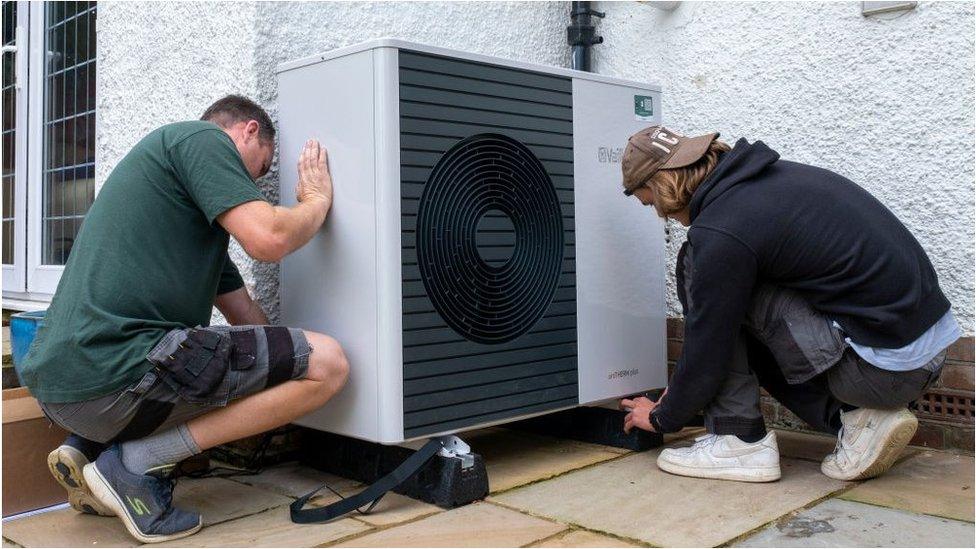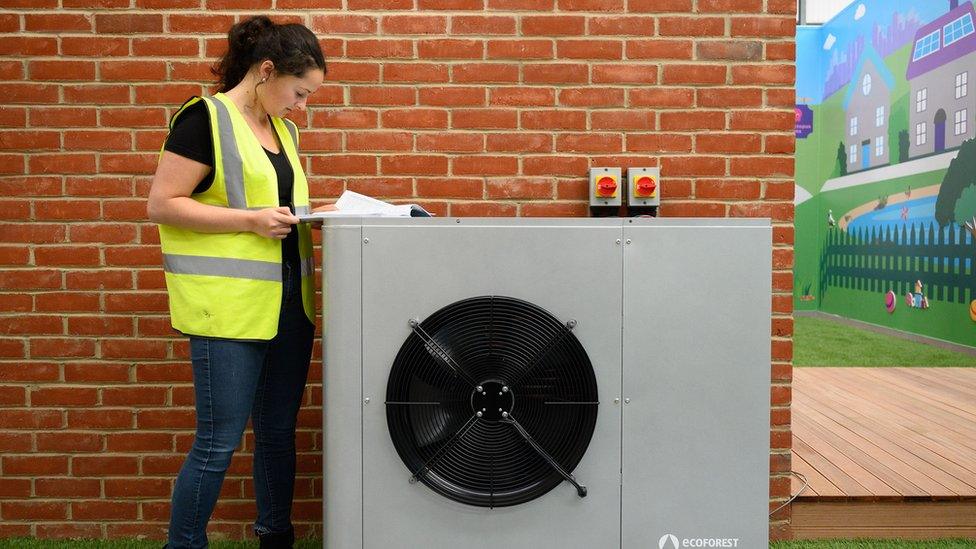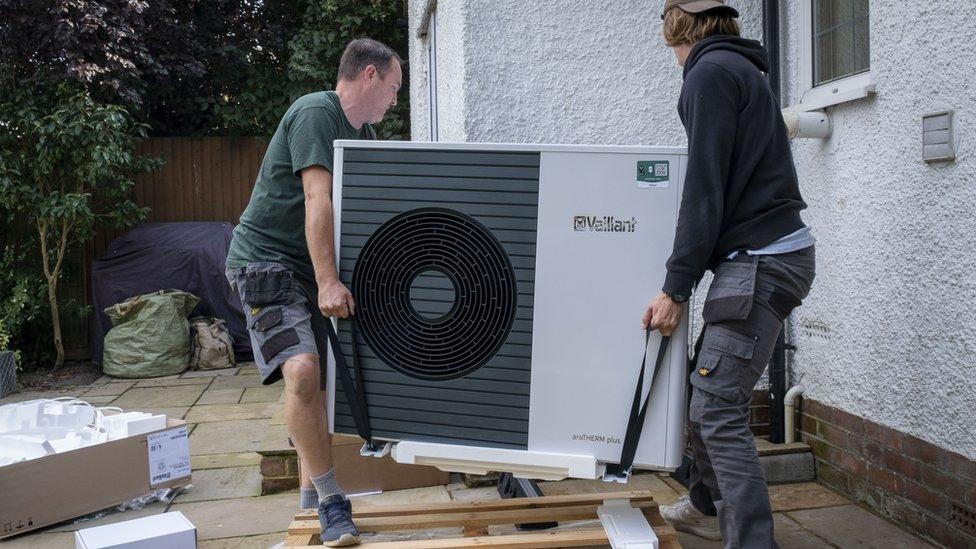Oxfordshire given £5m government cash to roll out heat pumps to homes
- Published

Air source heat pumps look a bit like an air conditioning unit on the outside of a building
Trial schemes to install heat pumps in homes in two neighbourhoods in Oxfordshire have been given £5m in government funding.
The schemes will see 150 heat pumps put in homes in Rose Hill, Oxford, and a further 136 in the Cherwell area.
They are both being funded through the government's £60m Heat Pump Ready programme.
The two heat pump projects are expected to be completed by the end of January 2025.
Oxford City Council said the scheme in the city, which has been given £3.2m in funding, would be able to offer heat pumps from £7,600.
It said that would be "roughly two thirds of the typical installation cost".
The authority said the Clean Heat Streets project would also offer a £5,000 subsidy for each air source heat pump installation - bringing the cost down further to "to £2,600 per heat pump".
A registration process, external is being set up for homeowners who want to take part - it is expected to open in the coming days.
The authority said the trial was open to homeowners, private rented tenants or landlords, and social housing tenants or landlords.
Under the Cherwell scheme, which has £1.8m in funding, homeowners will be offered "an innovative finance offering", although further details have not yet been released by Oxfordshire County Council.
Oxford has an ambition to become a net zero carbon city by 2040 - 10 years before the government's targets.
To do this more than 30,000 air-source heat pumps will need to be installed across the city by 2040.
The projects are two of four, external the others are in Fenland, Cambridgeshire and Bristol.

What is a heat pump?

Heat pumps extract warmth from the air, the ground or water - a bit like a fridge operating in reverse.
They are powered by electricity, so if you have a low-carbon source of electricity, they provide greener heating.
But many houses will require an upgrade to their energy efficiency, including insulation, before installing one.
A box of about 1m by 1m needs to be outside (close to or attached to the property) to draw in air.
It should be at least one metre from your neighbour's property so they will not be able to hear it, although it shouldn't be much louder than your fridge.
Read more: Should I get a heat pump and how much will it cost me?

Follow BBC South on Facebook, external, Twitter, or Instagram, external. Send your story ideas to south.newsonline@bbc.co.uk, external.
Related topics
- Published17 July 2023

- Published26 January 2023
